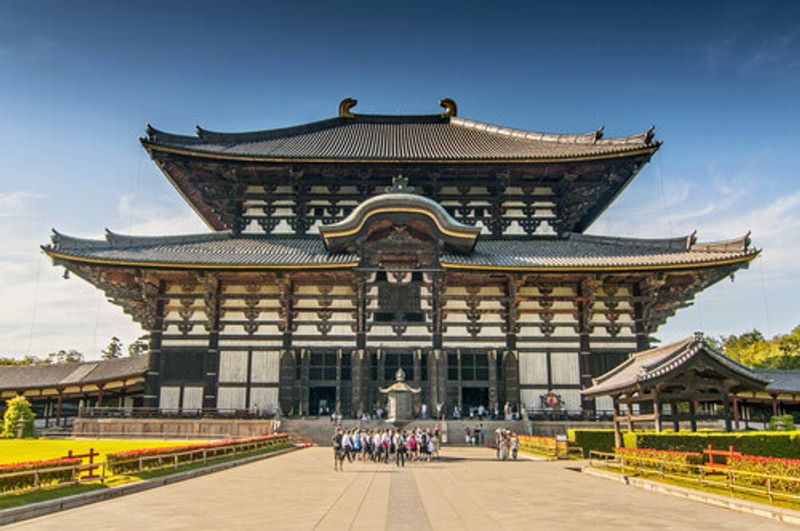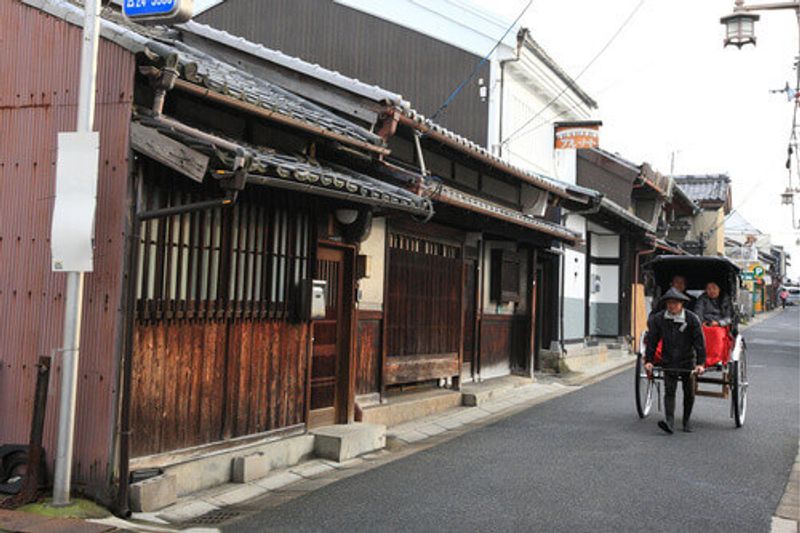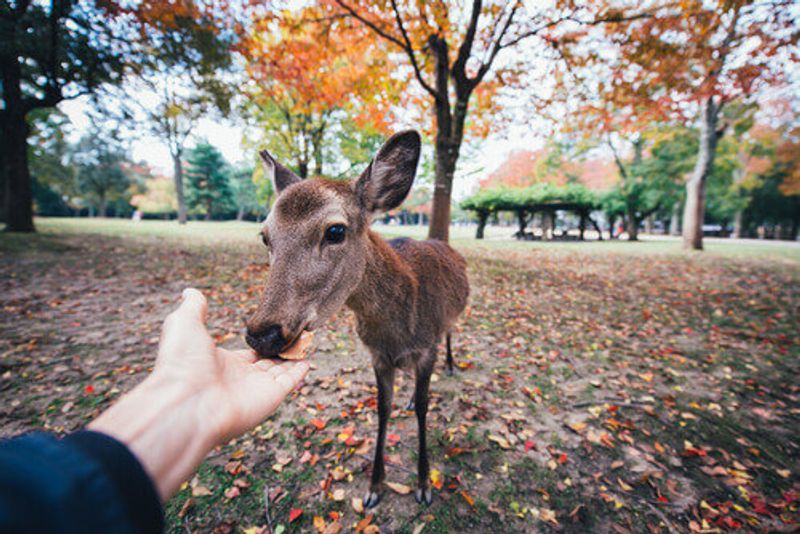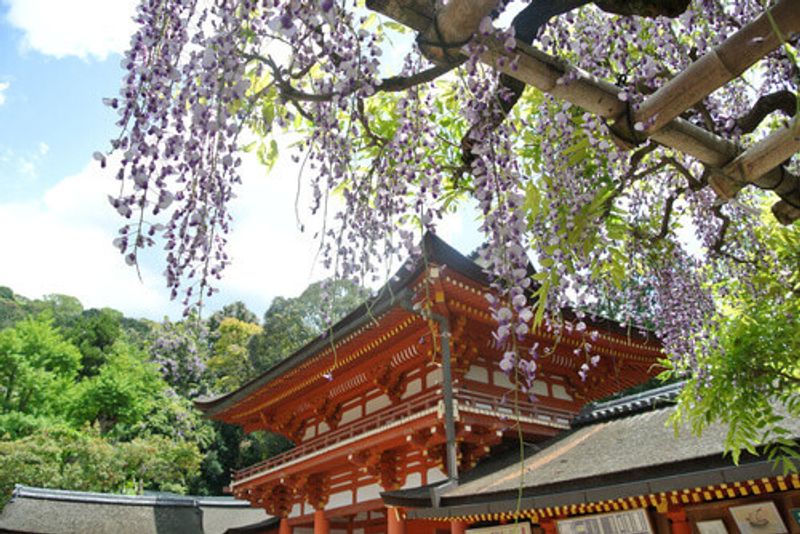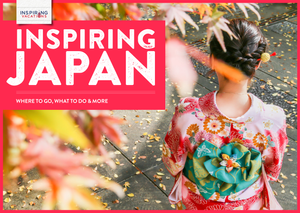With fodder for lovers of history, animals and foodies alike, Nara is a Japanese gem
From historic treasures, to imperial monuments and furry four-legged locals, Nara is one of Japan’s most magical destinations. While it’s often overlooked by travellers on a whirlwind tour of the country, the city is teeming with everything visitors look for in a Japanese jaunt. They can stroll from holy shrine to ancient temple, dip into a restaurant for some tasty local fare like nyumen (thin wheat noodles in hot broth) and when most tourists have left, finish the night with a cocktail at the iconic Lamp Bar, where owner Michito Kaneko was once named Best Bartender in the World.
Nara is located less than an hour by shinkansen (bullet train) from both Osaka and Kyoto and just two from Tokyo. Its proximity to three of Japan’s busiest cities makes it a popular day trip destination, but its attractions are fascinating and far more extensive than a one day itinerary can explore.
At the commencement of the Nara period (AD 710-784), the practice of moving the capital with each change in emperor was abandoned and the city became the first permanent capital of Japan. During this time, the most significant shift in Japanese culture was the infusion of Buddhism. Shōmu, the 45th emperor of Japan, was known to care greatly for his subjects and believed that the best way to promote peace was to integrate Buddhist teachings into his rule. His enthusiasm led to the construction of grand temples and shrines, many of which are still standing today and are UNESCO listed. Japanese art flourished in the Nara era and many regard it as the country’s most significant cultural period.
Take a walk through the streets of Nara for glimpses of its imperial past, interspersed with its dynamic present. Those seeking traditional, Japanese facades should head to the Naramachi district, where old merchant houses have been transformed into sweet shops and cafes. After exploring the area, head to Nara’s main attraction, its kōen (park), and meet the famous population of sika deer.
Not only is the Nara deer relatively tame and free to roam the city, but they’re considered sacred Shinto messengers. Ancient Japanese legend states that a god named Takemikazuchi arrived in Nara over 1,000 years ago on the back of a white deer. Since then, it’s believed that he and other gods have been sending deer as messengers to protect the city. Wander the park and you’ll see packets of shika senbei (deer crackers) being sold and deer bowing in return for their snacks (yes, really), but while used to human contact, the deer are still wild. Tease them with treats and you may end up being headbutted or nibbled.
You don’t have to travel far in Nara to discover stunning sights. Two of the city’s most well-known monuments – Tōdai-ji temple and Kasuga-Taisha shrine – are situated within the park. The former is a Buddhist complex and houses the world’s largest bronze statue of Buddha Vairocana, while the latter resembles a miniature Fushimi Inari-Taisha, but instead of donating torii gates to the shrine, people can donate lanterns to the Fujinami-no-ya hall. Flower-lovers should visit in May when the site is blanketed in blooming wisteria.

